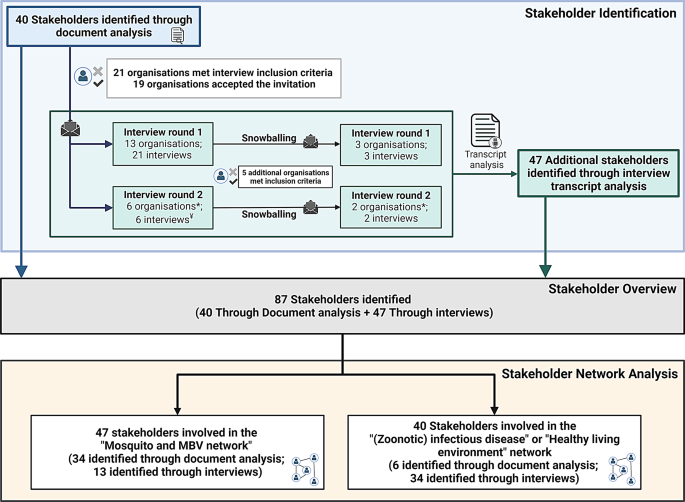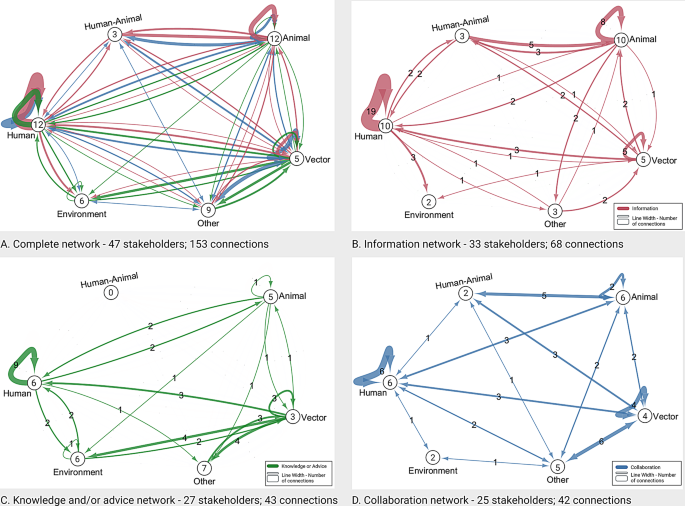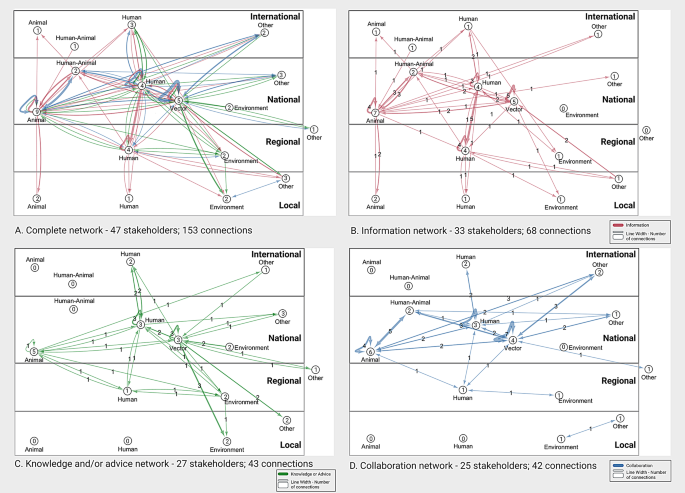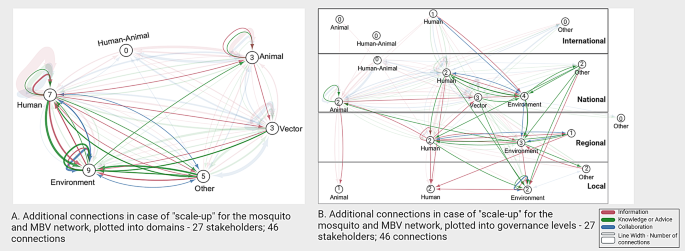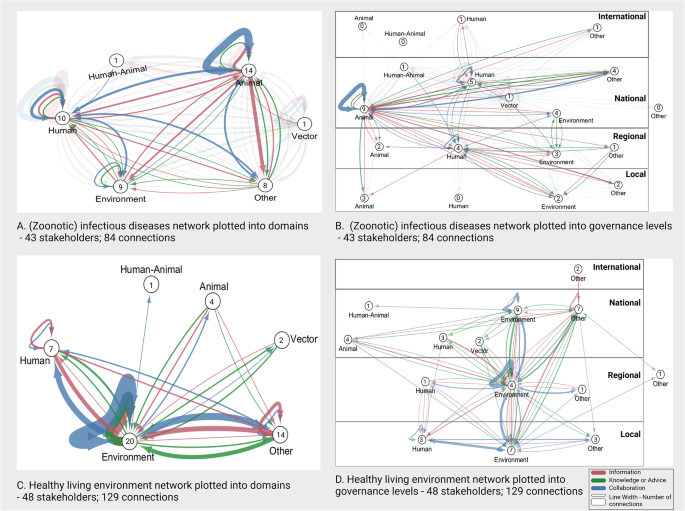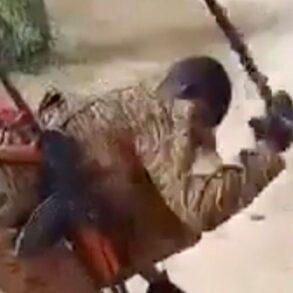Stakeholder overview
Stakeholder identification
Document and legislation analysis resulted in the identification of 40 stakeholders fitting the stakeholder definition (Fig. 2). After applying the inclusion and exclusion criteria for interview participation (Fig. 1) 21 stakeholder organisations were eligible and consequently invited. 19 stakeholder organisations accepted the invite, of those 13 were interviewed in the first interview round and six in the second round. These interviews revealed five additional stakeholders (three organisations and two additional departments of already included organisations) who were deemed essential for data collection and were consequently invited for an interview (Fig. 2). In total, 22 organisations were interviewed and, because multiple sub-organisations and departments were included, 32 interviews were held. Analysis of all interview transcripts, to identify stakeholders and stakeholder connections, showed all stakeholders identified through document analysis (40) were mentioned in the interview transcripts. Furthermore, 47 additional stakeholders fitting the stakeholder definition were mentioned in the interview transcript. Together, document analysis and interview transcripts identified 87 stakeholders. A more detailed overview of stakeholders identified, invited and interviewed can be found in additional file 1B.
Stakeholder overview: Stakeholder identification (document analysis and interviews), Stakeholder analysis, and Stakeholder network analysis.
*An additional department or suborganisation of an already identified stakeholder organisation was also interviewed. ¥ One person was interviewed about their work in two organisations
While all 87 stakeholders were mentioned during the interviews and fit the stakeholder definition, coding and analysis of the interview transcripts showed that not all 87 stakeholders currently have connections in the MBV network. Only 47 stakeholders had an active role in this network, most of these stakeholders were already identified through document analysis but thirteen additional stakeholders were identified through the interviews. The other 40 stakeholders do not currently have an active role in MBV preparedness and response but are involved in either one or both of the other themes ((Zoonotic) infectious diseases; Healthy living environment) (Fig. 2). This included six stakeholders for whom a role in MBV preparedness and response was identified in document analysis which indicates they have a role according to guidelines, reports or legislation, but do not perform these tasks yet.
Network analysis MBV preparedness and response
During the interviews a total of 153 connections between 47 stakeholders were identified for the network around MBV preparedness and response. These connections were split into the different interaction types: information (33 stakeholders; 68 connections), knowledge and advice (27 stakeholders; 43 connections), and collaborations (25 stakeholders; 42 connections) which shows that not every stakeholder is involved in all three interaction types (Figs. 3A-D and 4A-D). The networks for each interaction type are discussed below.
Information sharing network
The MBV information sharing network consists of one network with 68 connections between 33 stakeholders (Fig. 3B, detailed figure in additional file 1E). Stakeholders were on average directly connected to 3.21 other stakeholders (Average number of neighbours) and 2.96 steps were needed to reach another stakeholder in the network (Characteristic path length). The network density is 0.063 (range 0–1), indicating that overall, stakeholders were not strongly interconnected and that multiple steps were needed to reach all stakeholders in the network.
Information was shared between all different domains, but connections were sparser with the environment domain (Fig. 3B). Additionally, the environment domain only receives information on the topic of MBV. Within-domain information exchange was observed for the human domain and in the vector and animal domain but less frequently. Information was mostly exchanged between the national organisations in each domain (Fig. 4B). Information dissemination to international organisations mostly occurred through national organisations. Direct connections between the national and local organisations were present for the animal and vector domain but for the human domain most information was disseminated from national to local level organisations via regional organisations.
“Mosquito and Mosquito-borne virus” interaction networks between the domains.
Panel A shows the complete network with all connections between the different domains (human, animal, human-animal, vector, environment and ‘other’). Panel B. Shows information sharing (in pink). Panel C. shows knowledge and or advice sharing (in green). Panel D. shows collaboration
Knowledge and/or advice sharing network
The knowledge and/or advice network (from here on knowledge/advice) consists of three subnetworks, two isolated networks with connections between only two stakeholders (namely between blood bank and international blood banks and between two national animal health organisations) and one main network with 40 connections between 23 stakeholders (Fig. 3C, detailed figure in additional file 1E). In the main knowledge/advice network, stakeholders were on average directly connected to 2.5 stakeholders and 2.15 steps were needed to reach another stakeholder in the network. The network density is 0.073 (range 0 − 1). This indicates that stakeholders were not strongly interconnected and that multiple steps were needed to get knowledge/advice to all stakeholders in the network.
Knowledge/advice was mostly shared by the vector domain and received by the environment domain (Fig. 3C). Quotes corresponding with these connections showed they were related to advice about mosquito nuisance concerns from citizens in relation to water management and climate adaptation, rather than mosquito-borne virus risks. Limited sharing of knowledge/advice to international and local organisations was observed, except for the vector domain who shared with all different policy levels and had multiple interactions with local stakeholders from the environment and other domain (Fig. 4C). No connections were identified for the human-animal domain, however as described in the methods, the result for this domain should be interpreted as part of both the animal and human domain for which knowledge/advice sharing connections were observed.
“Mosquito and Mosquito-borne virus” interaction networks between the domains and their respective governance levels.
Panel A shows the complete network with all connections between the different domains (human, animal, human-animal, vector, environment and ‘other’) and governance levels (international, national, regional, local, other). Panel B. Shows information sharing (in pink). Panel C. shows knowledge and advice exchange (in green). Panel D. shows collaborations (in blue). Line numbers correspond with the number of connections between domains. Circle numbers correspond with the number of involved stakeholders in each governance level of the domains
Collaboration network
The collaboration network consists of two subnetworks, one isolated network between a local environment stakeholder (Municipality [Environment]) and a local ‘other’ stakeholder (Resident association) and one network with 40 bidirectional connections between 23 stakeholders (Fig. 3D, detailed figure in additional file 1E). In the main network, stakeholders were on average directly connected to 3.39 stakeholders and need 2.55 steps to reach another stakeholder in the network. Network density was 0.154 (range 0–1), this indicates stakeholders are interconnected but that multiple steps are still needed to initiate collaborations with all stakeholders in the network.
In the main network, multiple collaborations were present between all domains except for the environment domain, where only one collaboration between a regional human and a regional environmental stakeholder was observed (Figs. 3D and 4D). Collaborations mainly existed between national organisations of the different domains. Few collaborations with international and regional organisations were identified and no collaborations with local organisations. In the isolated network a collaboration on the local level was observed, this is a collaboration between an environment domain stakeholder and an ‘other’ domain stakeholder, showing there are collaborations on this theme. The lack of connection between this isolated network and the main network indicates a bottleneck in collaborations with local stakeholders as well as environmental stakeholders.
Connections in case of “scale-up”
In addition to the current connections, Fig. 5 shows the connections in case of “scale-up”. This network mainly shows additional connections between the human and environment domains on the national, regional and local level. Most “scale-up” connections are either information or knowledge sharing.
“Mosquito and Mosquito-borne virus” and “scale-up” interaction networks between the domains and their respective governance levels.
Panel A shows the complete network with all connections between the different domains (human, animal, human-animal, vector, environment and ‘other’). Panel B. shows the inter governance level (international, national, regional, local, other) connections. Circle numbers correspond with the number of involved stakeholders in each domain and respective governance level. Darker lines show the additional connections in case of “scale-up”, lighter lines show the original “Mosquito and Mosquito-borne virus” network connections
Central stakeholders and their roles
Tables 1 and 2 show the stakeholder organisations with the highest closeness- and betweenness centrality for each network plot. Stakeholders with a high closeness centrality can share with all other stakeholders in the network with minimal intermediary steps. Stakeholders with a high betweenness centrality are the shortest path between multiple otherwise unconnected stakeholders and might act as intermediaries between these less connected parts of the network. Centrality results for all stakeholders can be found in additional file 1E.
Central stakeholders in the information sharing network were stakeholders who have an active role in the surveillance of MBVs, perform research on mosquitoes and MBVs or were responsible for the regional response to MBVs (Tables 1 and 2). Stakeholders with an overall low centrality were stakeholders involved in task execution (hospitals; microbiology labs) or stakeholders in the environment domain.
Stakeholders with high closeness centrality in the knowledge/advice sharing network generally have an active role in policy making for MBVs or are stakeholder organisations with an advisory or executive role towards local organisations (mostly municipalities) (Table 1). Values for betweenness centrality differ greatly and only three stakeholders, of whom two from the vector domain, showed a high betweenness centrality (Table 2). These stakeholders have an active role in either policy making for MBVs or invasive mosquito monitoring and control. Stakeholders with low centrality were mostly environment and ‘other’ local organisations who only receive knowledge. Stakeholders with a moderate closeness but low betweenness centrality were stakeholders who only shared knowledge.
Stakeholders with high closeness centrality in the collaboration network have an important role in (inter)national research on mosquitoes and MBV’s, the other stakeholders have a role in the animal, vector and human surveillance and/or policy making for MBVs (Table 1). The same stakeholders have a high betweenness centrality except for the national animal health organisation (National Wildlife health centre), instead a national human health organisation (Ministry of Health) has a high betweenness centrality (Table 2). This organisation has an important role in policy making for MBVs. All stakeholders in the network had moderately high closeness centrality scores, betweenness centrality scores showed more variety.
Overall, local and regional organisations in all domains, and environment domain stakeholders in general are underrepresented in all networks and have lower centrality scores.
Stakeholder interview perspectives
Transcript analysis identified several underlying reasons for the underrepresentation of environmental and local or regional stakeholders. Urgency and recognition of potential problems arising from mosquitoes was absent or low among stakeholders from the environment domain. Additionally, participants mentioned “living environment” and “public health” are often tackled as separate task, allocated to different organisations or departments. Participants described that, various organisational differences, such as jargon, complicate knowledge and information exchange as well as collaborations. However, it was also noted by regional and local stakeholders that increased efforts are undertaken to integrate tasks between the environment and human domain. Environmental stakeholders also mentioned a potential conflict in priorities, they questioned whether taking measures to reduce mosquitoes might affect one of their main priorities, biodiversity. If it were necessary to make changes in environmental design to reduce mosquito abundance, they indicated they currently lack the required knowledge to do so and are in need of guidelines.
Potential reasons identified for the underrepresentation of local/regional stakeholders were amongst others, decentralization of tasks to multiple regional and local organisations, leading to a high number of stakeholders and fragmented approach which is subject to regional differences. The fragmentation of tasks and responsibilities between different organisations and respective departments was noted to lead to a lack of clarity on whom to contact or involve. Furthermore, a low sense of awareness for MBVs, among local actors such as veterinarians and general practitioners was mentioned. While participants acknowledged that this was not unexpected, since vector-borne diseases are only a fragment of their responsibilities, it was a concern of multiple participants as it might lead to a delay in the early warning of mosquito-borne diseases.
Network analysis for related themes
Analysis of connections fitting the other two themes ((Zoonotic) Infectious diseases; Healthy living environment) revealed different network dynamics. The zoonotic disease network overlaps with the MBV network but revealed more connections between the animal domain and the environment domain, between the human domain and environment domain, and in general more connections with regional and local stakeholders (Fig. 6). The additional connections identified for this theme can possibly be utilized for MBV preparedness and response in the future. In the “Healthy living environment network” all domains have connections with the environment domain rather than with each other (Fig. 6). The human domain is most connected to the environment domain, with multiple connections for information and knowledge sharing as well as collaborations. These connections are mostly present on the regional and local level. This network visualisation indicates that the environment domain operates largely at the regional and local level.
“(Zoonotic) infectious diseases” and “Healthy living environment” interaction networks between the domains and their respective governance levels.
Panel A shows the complete network with all connections between the different domains (human, animal, human-animal, vector, environment and ‘other’) for the “(Zoonotic) infectious disease” network. Panel B. shows the inter governance level (international, national, regional, local, other) connections for the “(Zoonotic) infectious diseases” network. Panel C. shows the complete network with all connections between the different domains for the “healthy living environment” network. Panel D. shows the inter governance level connections for the “healthy living environment” network. Circle numbers correspond with the number of involved stakeholders in each domain and or governance level
This post was originally published on this site be sure to check out more of their content




